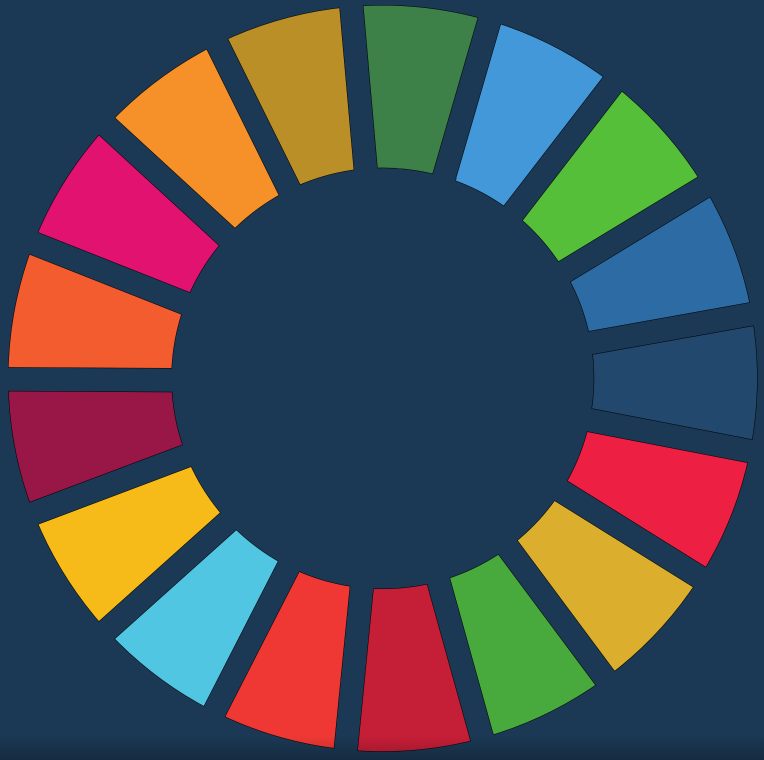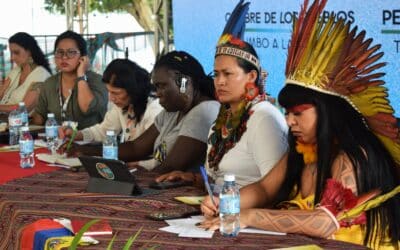By Simone Lovera*
Agenda2030 uses the term civil society and other stakeholders but there is no clear definition of either civil society, or stakeholders. Sometimes, the private sector is included in the definition of “civil society”, but in processes like the Committee on Food Security, they are considered separate, which means in practice they are given equal space to all other groups and sectors of civil society. Agenda 21 was more specific and distinguished 9 major groups: NGOs, business and industry, local authorities, science, women, children and youth, workers and their trade unions, Indigenous Peoples and farmers. It is important to realize these groups have differentiated levels of economic and political power, so simply advocating a participatory approach will not lead to an equal level playing field. There is a need to take into account contextual inequalities if we believe in leaving no one behind. For that reason, I would like to argue for the distinction of the 9 major groups into rightsholders and stakeholders.
Rightsholders are actors that possess internationally recognized human rights, e.g. under agreements like CEDAW, UNDRIPs and the voluntary guidelines on land tenure. They also represent the assumed beneficiaries of sustainable development policies. For example, women are the assumed beneficiary of SDG5 and a clear rightsholder group.
Of the 9 major groups, 5 major groups, women, youth and children, workers, farmers and Indigenous Peoples can be distinguished as the assumed beneficiaries of Agenda2030, and holders of clearly recognized human rights.
The other 4 major groups could be classified as mere stakeholders. They have a stake in sustainable development policy, procedural rights and acquired rights, and they are an important intermediary target group, but they do not represent individuals whose human rights are personally affected and that are the assumed beneficiaries of Agenda2030.
It is particularly important to distinguish NGOs from righsholder constituencies in this respect. The NGO sector has become increasingly professionalized over the past 30 years, which means it is dependent upon significant financial support for sustaining its organizational structures. It can thus have an important financial stake in certain policies. REDD+ is a clear example. It has been advocated for using a discourse that emhasized the potential positive impacts of REDD+ for forest-dependent Indigenous peoples and local communities. Yet, the interests of these assumed beneficiaries are not necessarily aligned with the interests of some of the main agents behind the REDD+ regime. The latter included conservation NGOs that had an important economic stake in this new regime, as they received significant funding as intermediaries in REDD+ projects. According to the 2016 REDD+ voluntary database, the main REDD+ donor, the Norwegian Government, has provided no less than 261 million USD in REDD+ support to such NGOs, while the assumed beneficiaries, forest-dependent peoples, received less than 7 million USD.
For that reason it is important to distinguish NGOs from rightsholders. They might have differentiated economic interests, and there is a risk of misrepresentation if they are all classified as “stakeholders” or “civil society”.
The distinction between different actors is even more important in light of the current trend to promote public-private partnerships (PPPs), blended finance and other forms of collaboration between the private sector and public interest organizations like UN agencies, scientific institutions and NGOs. Due to declining public financial support these actors have become increasingly dependent upon private sector support, and these financial dependencies have created incentives to support private commercial interests alongside, or even in lieu of, public interests.
It has often been suggested that Agenda2030 supports multi-stakeholder partnerships, as SDG17 has been presented by a UN marketing campaign as the Global Goal on “Partnerships for the Goals” In reality, the formal title of SDG 17 is to strengthen the means of implementation and revitalize the global partnership for sustainable development. Only 2 out of the 169 SDG targets talk about “partnershipS”. Former drafts of the SDG negotiation texts included far more references to PPPs, but they were deleted as a result of opposition by a large number of developing countries, partly out of concern of potential conflicts of interests and undue private sector influence in the sustainable development agenda.
Yet despite this opposition, partnerships continue to be actively promoted by the UN administration itself, for various reasons. Firstly, as a means for the UN to maintain its relevance in diversified governance models that link State with non-State actors. However, an elaborate research by the free University of Amsterdam on over 1000 post-Rio PPPs found that there is no evidence of PPPs having positive impacts on the regulatory, implementation and participation deficits in international governance. In fact, they concluded that they have a weak legitimacy record and reproduce or even intensify existing relationships in the international system.
Another reason the UN administration has been promoting PPPs is because it has become increasingly dependent on private sector financial support itself. Donors have been cutting significantly on public support for the UN system. For example, the percentage of funding provided by the UN regular budget to the UN Environment Program declined from 21.1% in 1973 to only 2.8% in 2012. So UN agencies are forced to secure part of their financial support from the private sector.
I would like to emphasize it is worthwhile to have a dialogue with private sector in order to improve production practices. Platforms and multi-actor think tanks can be very useful in this respect. However, PPPs trigger two dilemma’s:
One important dilemma is how to address potential conflicts of interests and other financial dependencies created by the collaboration between public entities and the private sector. Regardless of good intentions, one simply cannot deny that financial dependencies created by PPPs will trigger an incentive amongst public institutions to be hesitant to promote policies that might harm the commercial interests of their partners.
The other dilemma is that partnerships with the private sector will always create tension with a limits to growth agenda. No matter how well intended some companies can be, they are bound by the rules of the capitalist economy, which means that they cannot promote any policies that would compromise the growth of their business. Institutionally, companies are ruled by their shareholders, who have invested their resources in shares of the company in expectation of increased returns. They can accept and promote improved production, but they simply cannot accept limits to growth.
The latest pilot programs of the Global Environment Facility (GEF), which is experimenting with different forms of blended finance and private sector collaboration, are a good example of these issues. Through the Integrated Approaches Pilot Program GEF promotes, amongst others, zero-deforestation commodity chains in beef, soy and palmoil in close collaboration with the private sector. Meanwhile, through the non-grants instrument, GEF has invested in creating new markets for relatively biodiversity-friendly products like shade-grown coffee. As a result, GEF has nowadays invested part of its financial assets in a coffee-growing company in the expectation that that company will provide returns on this investment. This means GEF has obtained a clear economic stake in the expansion of coffee production.
But the planet’s ecological space is limited, and practically every hectare of land on earth could potentially be restored to a carbon- and biodiversity rich ecosystem. Moreover, every hectare of land on earth is under formal or informal tenure by a rightsholder. In fact, there is convincing evidence, and governments engaged in the REDD+ discussion have openly admitted, that there will always be leakage, displacement of deforestation and related emissions, if demand for the commodities that trigger deforestation, like meat and dairy, is not limited. But typically, GEF coffee investments, and the zero-deforestation projects GEF promotes do not include quantity-related measures that would limit demand as it simply cannot be asked from companies to consent to policies that limit beef, soy, palmoil or coffee demand, and thus their growth.
So in conclusion, I think it is important to clearly distinguish and assure more transparency on the different actors in earth system governance, on the constituencies they represent, on the financial dependencies created by different forms of multi-actor collaboration, and on the economic incentives that might influence actors to advocate for certain sustainable development policies. Different actors have different levels of economic and political power and by allowing formal partnerships between economically powerful actors and public institutions one also leaves behind less powerful rightsholder groups – which was the conclusion of the review of Free University as well. And most importantly, it should be ensured the rightsholder groups that represent the assumed beneficiaries of the SDGs are able to participate through their own, differentiated, constituencies.
*Simone Lovera is the Executive Director of Global Forest Coalition




